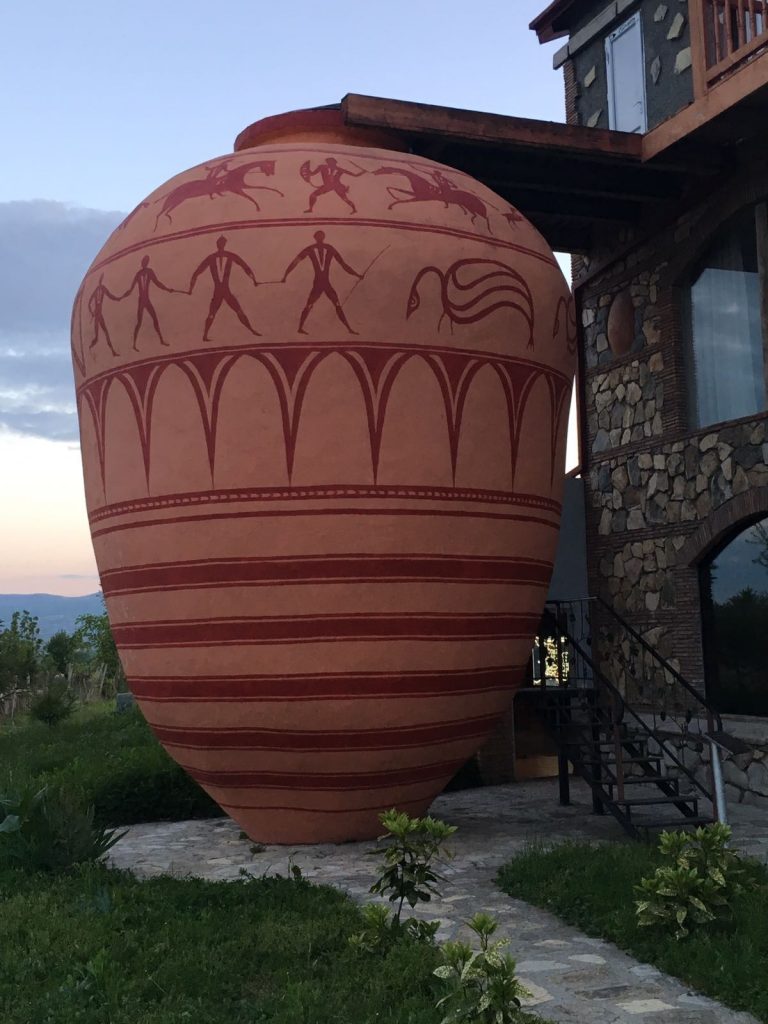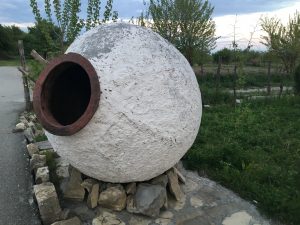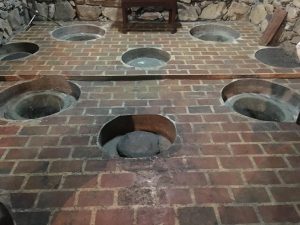Tatiana Mann puts forward a new way categorisation system for this heterogeneous Hurrian sensation.
We may ask ourselves if there are any new challenges left for the wine connoisseur. The answer is most likely yes, especially if you are in Georgia with its fine gastronomic tradition, where it’s seriously difficult to find the right wines to match the great tapas-style dishes on the table, which are such an essential part of the traditional local cuisine.
I have travelled throughout the lands of the ancient Hurrian nation more than a dozen times and have researched the Caucasus Mountains from three different angles. Throughout these travels, I have found three common features regarding Georgian wines, two of them relating to qvevri-style wines: qvevri style wines are rarely clearly described, and they are never classified on the label, and it is not easy to find local fine wines in the given region’s restaurants.
This may sound negative, but only perhaps if your job is in the wine trade and you need to pick up on all the technical aspects. Foreign guests, including myself, love Georgia’s gorgeous food and wine, and flock to the country for the unbeatable Caucasus hospitality.
After a trip earlier this year, I was invited as a lecturer to introduce Georgian wines to a group of 40 Russian travellers accustomed to good wine and food. In the Lazo Lazareishvili Wine Bar, Tbilisi, I tasted and discussed many qvevri wines – wines stored and matured in ancient earthenware pots that are buried below ground. To follow up, I then arranged to visit Eco Lagvinari and a few other Georgian wineries. After this trip there was the great Georgian Wine Tasting in London, with another 100 plus wines for us to sample and evaluate.
My next trip was to Konstantin Dzitoev, an Ossetian winery located on the other side of the Caucasus Mountains. Konstantin’s wife Diana helped me to research and pair their wines with the regional cuisine. I found that only a few local dishes could be matched with European style red wines. Two of these were brains in a creamy sauce and Ossetian pie with beetroot sauce.
Up close and personal
It’s so great to be in direct contact with the winemaker. You can listen to his or her story, ask questions – and somehow the wine tastes so much nicer when the winemaker pours it and discusses its merits. It’s not so easy for the end consumer to understand the style and what food it would best suit. It’s like gin and tonic: the tonic is three-quarters of the drink, so it has a huge influence on its flavour. Good gin can be ruined by the wrong tonic. So it is with Georgian cuisine: it is so colourful and full of spice that a well-chosen wine can give double the pleasure and an ill-matched one will be as dull as a glass of water.
Incidentally, I first learned this while working at Selfridges, where I responsible for selling fine wines. Customers would ask for an Alsace wine for salads or for desserts but we, the staff, had no chance to open each bottle so didn’t know what to recommend – and in those days there were no helpful indications on the label. There was a chance that customers might want to buy a light limey version and go home with a dessert style that was completely wrong for the dish.
The qvevri conundrum
The situation I encountered at Selfridges is similar to dealing with qvevri. There are surprisingly few ambassadors of this style of amber wine, which is why, I suppose, few people know about them. What you get is a diverse range, and it’s impossible to say whether one style is better than another. All depends on the level of the tannins and sulphur, the variety of the grapes, the length of the ageing process and even on the state of hygiene of the qvevri themselves, in which the wine is stored and matured. And, as always, the skill and care of the winemaker.
As a certified Sherry Educator, I know that the key features to identify are the sweetness, tannin levels and the nuttiness of the wine. This will vary in a qvevri product, as the wine can be stored in the pot from six weeks to six months.
All this set me thinking. These are wonderful wines that have no sensible qvevri categorisation system to describe them. Maybe I should create one. Below is my first draft, and of course I will polish this as I gain experience, meet winemakers and research the market more fully.
Proposed Qvevri Categorisation System
Winemakers depend on Mother Nature. The qvevri dictates the final maceration process, with limited input from the winemaker. Each qvevri is individual; it’s remarkable to hear winemakers identify different qvevri by numbers, knowing that each one will establish its own flavour spectrum on the wine it contains over time. Indeed, time and patience are needed, as with a dry sherry. It takes time, too, to appreciate this style, and that’s why the first lovers of Qvevri were sherry lovers from various countries; connoisseurs who were already familiar with the oxidative way of winemaking and loved the nutty character.
Some European-oriented winemakers from the region choose to keep the wine in contact with the grape skins for a prolonged period and do not use qvevri. One of the wines listed below is made in this fashion.
As I say, the range is wide. Qvevri style wine is the Queen of Caucasus cuisine and can be drunk with starters, main courses and desserts – and can even be enjoyed with cigars. The range is from aperitifs to digestifs.
In Georgia there are huge celebration ceremonies in spring when the qvevri are opened. I dream of going to one of the premier tastings. In my imagination I have conceived of a drink I would love to taste: a blend of a good qvevri and a wine made in a conventional European winemaking style from the same grape, to add qvevri complexity to a ‘classic’ wine. A ratio of 85:15 would be perfect, I believe.
Qvevri Scale
The scale is built on tannin levels, and flavours characterised by nuts. O = the typical European style of white wines, with no tannins.
1. Bright fruit-floral character. Dried sharon fruit. Honey. Touch of tropical fruit. First appearance of nut character; let’s call it pine nuts.
2. Spring garden flowers continue, but less fragrant. Maple leaves. Pine nuts.
3. Field flowers. Hazelnut.
4. Dry field flowers. Hazelnut. More savoury and tannic style.
5. Walnuts. Sun-dried late-August field flowers. Serious level of tannins.
6. The highest level of tannins. Dried walnuts with skin from the middle of the nut.
7. Cashew nuts, not too dry, chamomile, dried field flowers, ripe apples, pear. Middle level of tannins.
Now to place individual Georgian wines into these categories. I’ve tasted them twice. Note: the second time was at a blind tasting, to determine whether I placed the wine in the same category or not.
Category 1.
2014 Giuaani, Mtsvane Qvevri
2.
2015 Mandili Mtsvane Qvevri
2015 John Okro, Rkatsiteli
2014 Vita Vinea, Kisi (dark hay colour)
3.
2015 Vaziani, Mtsvane Qvevri
2016 Bruale, Rkatsiteli Mtsvane (incredible colour – very bright. Type of antique gold and rose mix).
4.
I haven’t found right one for this category yet
5.
2014 Orgo, Rkatsiteli
2015 Iago Bitarishvili, Skin Contact Chinuri
2016 Giuaani, Kisi
6.
2015 Mosmieri, Kakhuri
2016 Giuaani Khikhvi (Хихви)
2016 Askaneli Brothers, Qvevri Dora Rkatsiteli
7.
2015 Pheasant’s Tears, Rkatsiteli, Kakheti
2016 Giuaani, Four Qvevris (4 grapes, pear in aroma)
By Tatiana Pakhmutova
Do you agree with Tatiana’s proposed qvevri scale? Do you have any wines to add to certain categories? Email a letter response or article contribution to [email protected]










